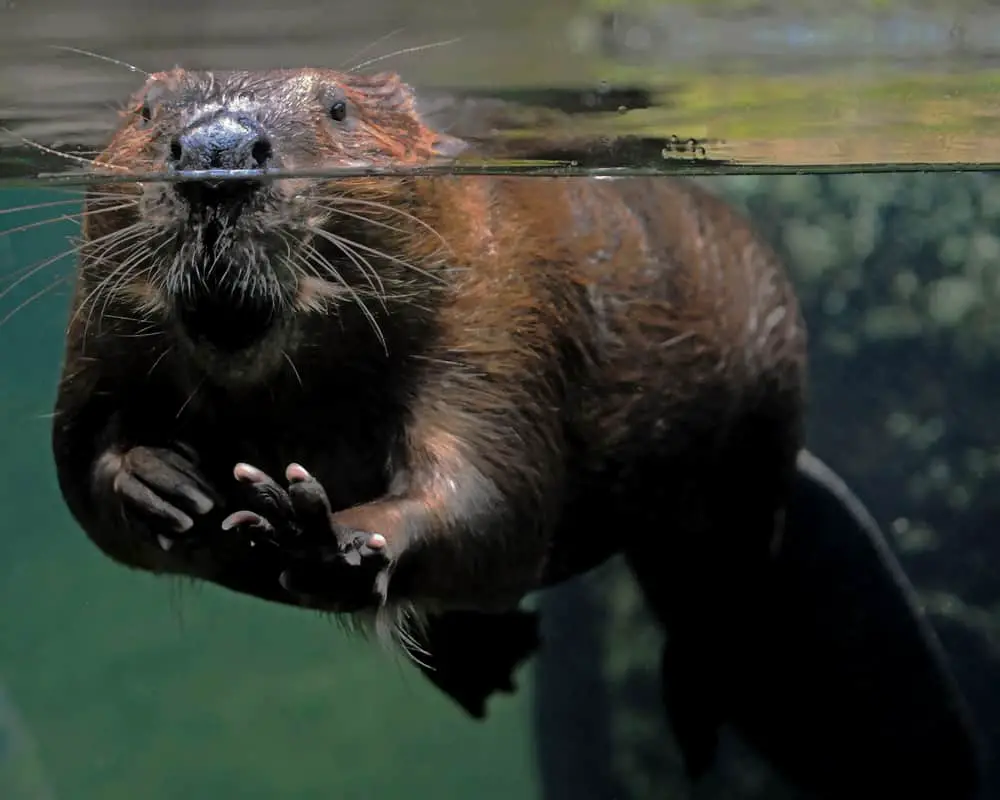
Beavers are a type of semi-aquatic mammal that are part of the rodent family. There are two species of beaver. The Eurasian Beaver is found in Europe and Asia, while the more common North American Beaver is native to most of Canada and the U.S. though it was introduced as far south as Chile.
Both species are found in freshwater rivers, streams, and ponds where they build their elaborate homes from trees, branches, and mud.
They are low-slung animals that are better suited to the water with their webbed feet and a large, flat tail that acts as a rudder as they swim. They can be quite large, weighing as much as 70 pounds, though on average they are closer to 50 pounds. At maturity, beavers may be up to 1.5 feet tall and between 2.5 and 3 feet long.
The famous image of the beaver is one of the long-toothed, furry, brown animals gnawings on riverside tree trunks which it uses to make its famous beaver dams. They drag the fallen trees down the banks, into the water, and maneuver them into place. They use their tail to slap mud onto the floor and walls of the structures which can wind up being over 10 feet high.
Beavers are strict herbivores and eat twigs, leaves, and the soft inner bark of deciduous trees like cottonwoods and aspens. Whether building its home or foraging for food, gnawing on the trees is essential to wear down its front teeth, which, like other rodents never stop growing. While a beaver may only live for about 10 years, the dams may be repaired and recycled for generations.
Table of Contents
Nutria
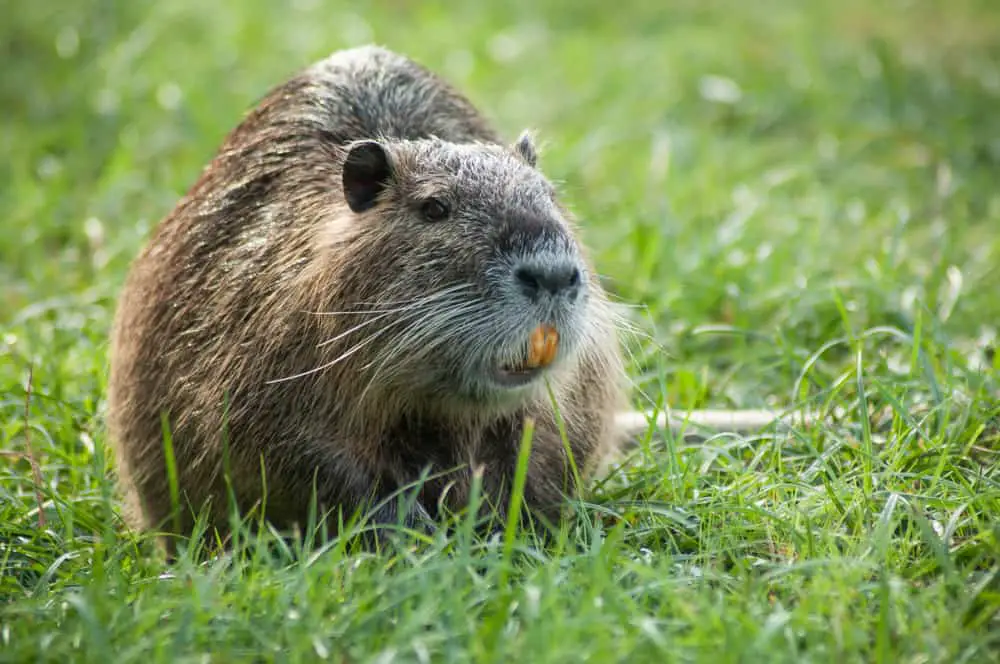
The animal most frequently mistaken as a beaver is one that few may have heard of. The nutria is also a semi-aquatic, brown, herbivorous rodent. The nutria is most commonly found in South America though there are some colonies in the coastal areas of the U.S. Gulf Coast. Though they are considered to be large rodents, they grow to be only about half the size of a beaver.
It is not surprising that nutria and beavers are easily confused. They both live in freshwater streams, rivers, and wetlands. They are of a similar body shape, and they spend about half of their time in the water and half out.
The easiest way to tell a nutria from a beaver is to look to the tail as the nutria has a long, thin, bald tail, much like a rat. The nutria prefers to forage for roots, tubers, and aquatic grasses. It does not build dams, instead, it creates elaborate tunnels that house huge colonies that live harmoniously.
Muskrat
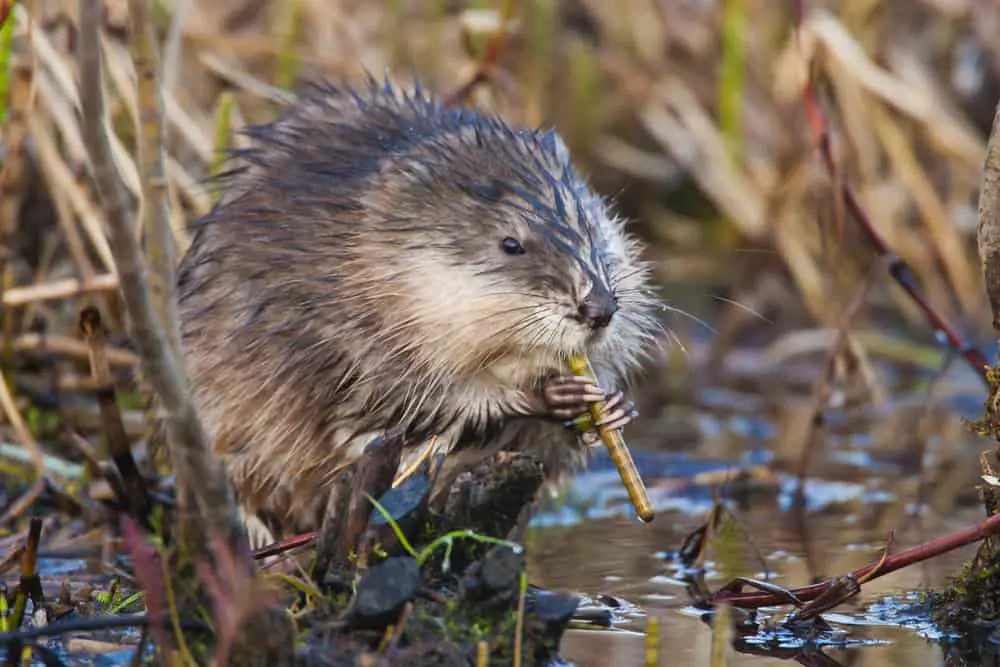
Muskrats could almost be mistaken for young beavers as they often share a habitat and are only about 20 inches and four pounds at maturity. The identifying feature of a muskrat is its hairless tail that while narrow, is slightly flattened, making it wider than it is tall. They are native to North America, but humans introduced them to Europe and Asia where they have thrived.
Though their tails are slender, muskrats, like beavers, use them to slap the water as a warning sign to predators. Both species are also solitary coming together to mate, and then living in groups only until their young are grown. Muskrats do not cut down trees, but they do use other vegetation mixed with to create domed dens on riverbanks that are only accessible from an underwater entrance.
Since muskrats are a bit smaller, it is more common to find them in shallow water such as marshes or streams. They also have a short life span, generally only living for one year. Muskrats are omnivorous, eating a variety of aquatic plants, shellfish, frogs, and fish.
River Otter
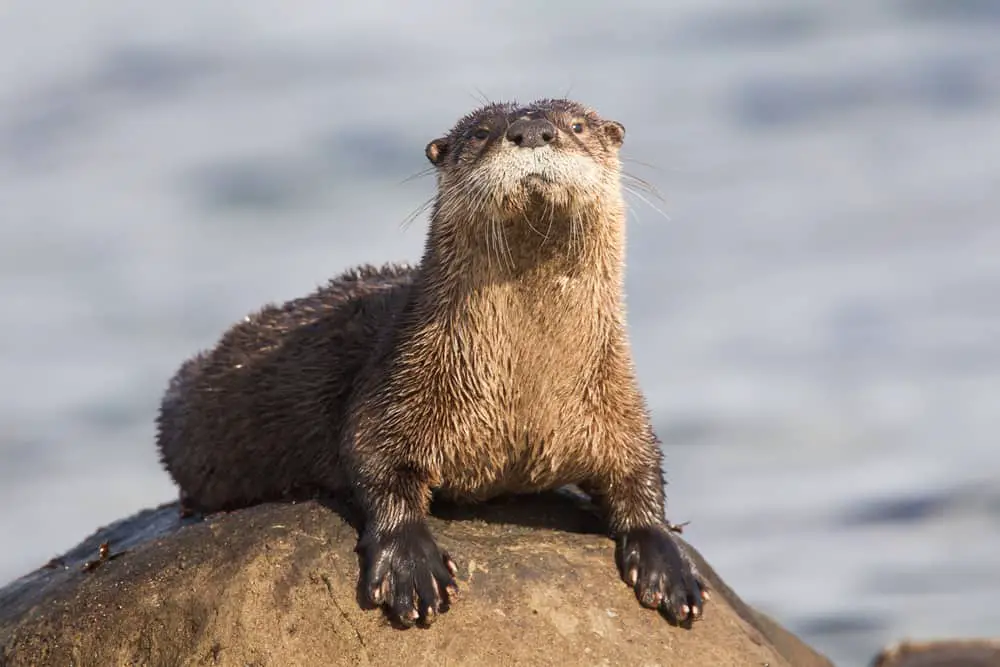
River otters and beavers share a lot of the same habitat as both are strong swimmers that are native to the rivers and streams of North America. The calm waters created upstream of beaver dams can create an ideal hunting ground for the river otter. They are, however, fairly easy to distinguish as river otters are long, lean, and notoriously playful, often seen scampering the riverbanks in a game of chase.
River otters grow to 34-50 inches in length and can reach 25 pounds which is about half the weight of the beaver. The most similar quality may be that both river otters and beavers are highly problematic for human industry. A beaver dam may block a river causing unwanted flooding while river otters are known to patrol fisheries to steal fish, mussels, and crayfish.
As members of the weasel family, river otters are carnivores, though they do have a varied diet consisting of turtles, amphibians, eggs, and even insects. River otters are considered social animals and are often found living in small familial groups. Despite what is considered a cheerful demeanor, river otters have been known to be aggressive towards beavers, even chasing them out of their dam to take it as their own.
Sea Otter
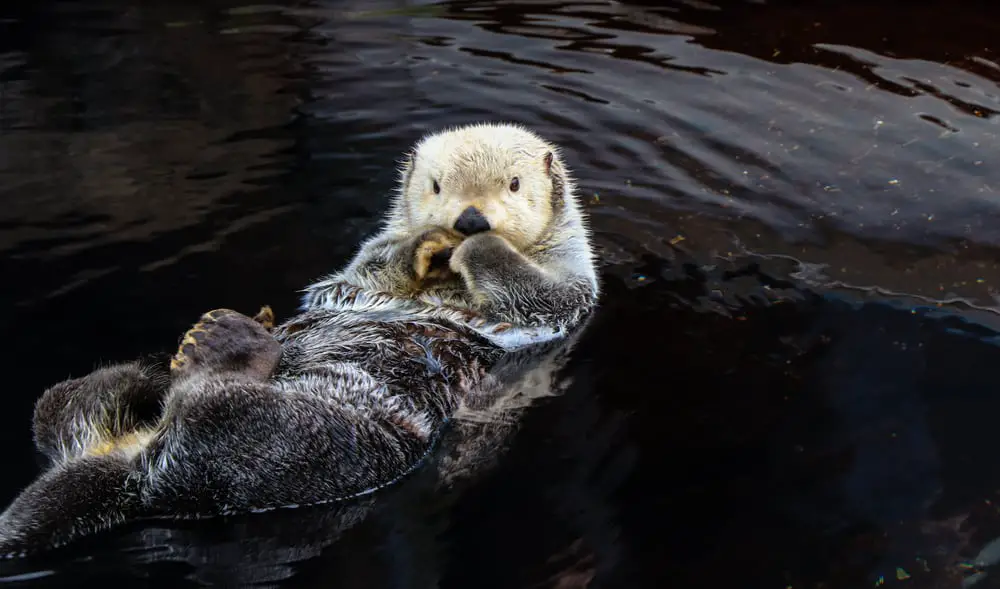
Though similar to both the river otter and the beaver, the widely beloved sea otter stands on its own. Sea otters are very fuzzy, boasting the densest fur in the animal kingdom, with one million hairs per square inch. This allows them to live nearly exclusively in the ocean waters, often in very cold areas as their populations range from southern California to Alaska.
Sea otters may seem similar to a beaver, but aside from webbed feet and a history of value in the fur trade, they have little in common. Sea otters are well-adapted to life on the often tumultuous seashore while a beaver’s niche is to create calm water with its dams. Despite the arguably more dangerous environment, sea otters can live twice as long as beavers.
Sea otters are much larger than beavers, with males growing as long as 4.9 feet and reaching 100 pounds. A behavior unique to the sea otter is that they spend a lot of time floating on their backs, a position they adapt whether sleeping, socializing, or sunning. Otters are intelligent and creative; they often use rocks to crack into crabs and clams which they balance on their stomach as they float.
Groundhog

Groundhogs, also known as woodchucks, are terrestrial rodents. They live solitary lives in underground burrows, but they are known to alert each other if danger is near. Groundhogs are well-adapted to burrowing and often exclusively receive all of their water by eating plants rather than drinking from a water source.
Physically, a groundhog is another rodent that has some passing resemblance to a beaver. They both have long front teeth, squat bodies, and small ears. The groundhog is also an omnivore, but not always to the same standards as a beaver as they will forage for grubs or insects.
The groundhog is only about eight pounds and 16 inches long. Though in areas with low predation, they have been reported to reach 30 pounds. Groundhogs live about six years in the wild and up to 14 years in captivity, despite the story that the famous, immortal Punxsutawney Phil is a happy 135 years old.
Water Vole
Water voles are small rodents that, while considered semi-aquatic, initially seem poorly adapted for swimming. Despite non-webbed feet and rather squat bodies, they seem to be comfortable in shallow water and were historically found in marshes. They are native to Europe, particularly the United Kingdom where these days, they can be found with a water source as small as a ditch.
Though sometimes referred to as a rat, the water vole is built much more similar to a beaver. Like the beaver, water voles are herbivores, eating leaves, grasses, and softwood. Through the beaver reintroduction programs in the UK, these two species may begin sharing an environment again for the first time in 500 years.
Including their long tail, male water voles are approximately eight inches long and can weigh up to half a pound. They dig tunnels for their burrows, often in the soft banks of creeks or streams. Their social structure is not well understood as they appear to be solitary but may share tunneling systems.
Capybara
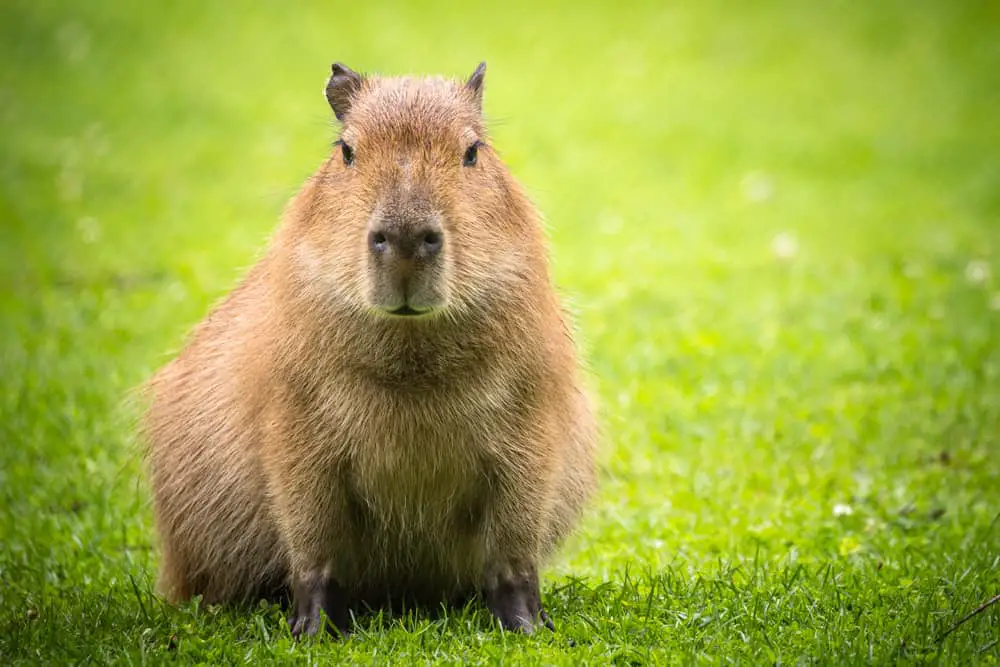
The capybara is the largest of the rodent family growing to 4.4 feet long and weighing between 77 and 150 pounds. Native to South America, the capybara is semi-aquatic and lives in close-knit, communal groups. They are preyed upon not only by jaguars, ocelots, and anacondas but they are also hunted for their meat by humans.
At first glance, the capybara and beaver share a little resemblance, with the former often described as a giant guinea pig. Despite the additional heft, the capybara is about the same length as a beaver, also has webbed feet, and the two distant family members have similar skull shapes. Capybaras are known for being a particularly peaceful species.
Capybaras are marsh-dwelling herbivores that eat a slightly more varied diet than the beaver including tree bark, grasses, sugar cane, and tubers. The most notable differences are the capybara’s long legs and running ability of up to 22 mph. Due to the number of predators, capybara generally only live 4-5 years in the wild.
Porcupine
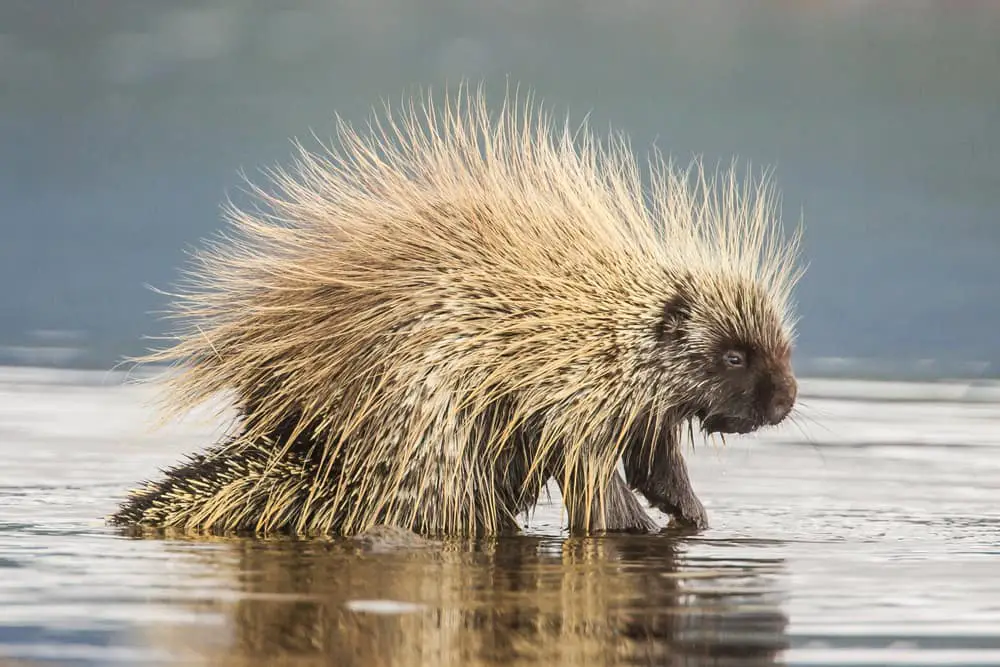
The North American porcupine and beavers share similar ecosystems, with the beavers occupying the water, and the porcupines in the trees. The most obvious feature of the porcupine is the 30,000 quills the cover its neck, back, and tail. These quills are actually long, stiff hairs that each have 700 barbs at their tip which make them an incredibly efficient and painful weapon.
